Let’s make your summer cookouts extra delicious with this smoked pellet grill brisket! After cooking low and slow, this Texas-style smoked brisket comes out melt-in-your mouth tender, and smoking a beef brisket is surprisingly simple, even if this is your first brisket. Your summer barbecues will be everyone’s favorite spot when this brisket is on the menu — it’s the ultimate summer dinner.
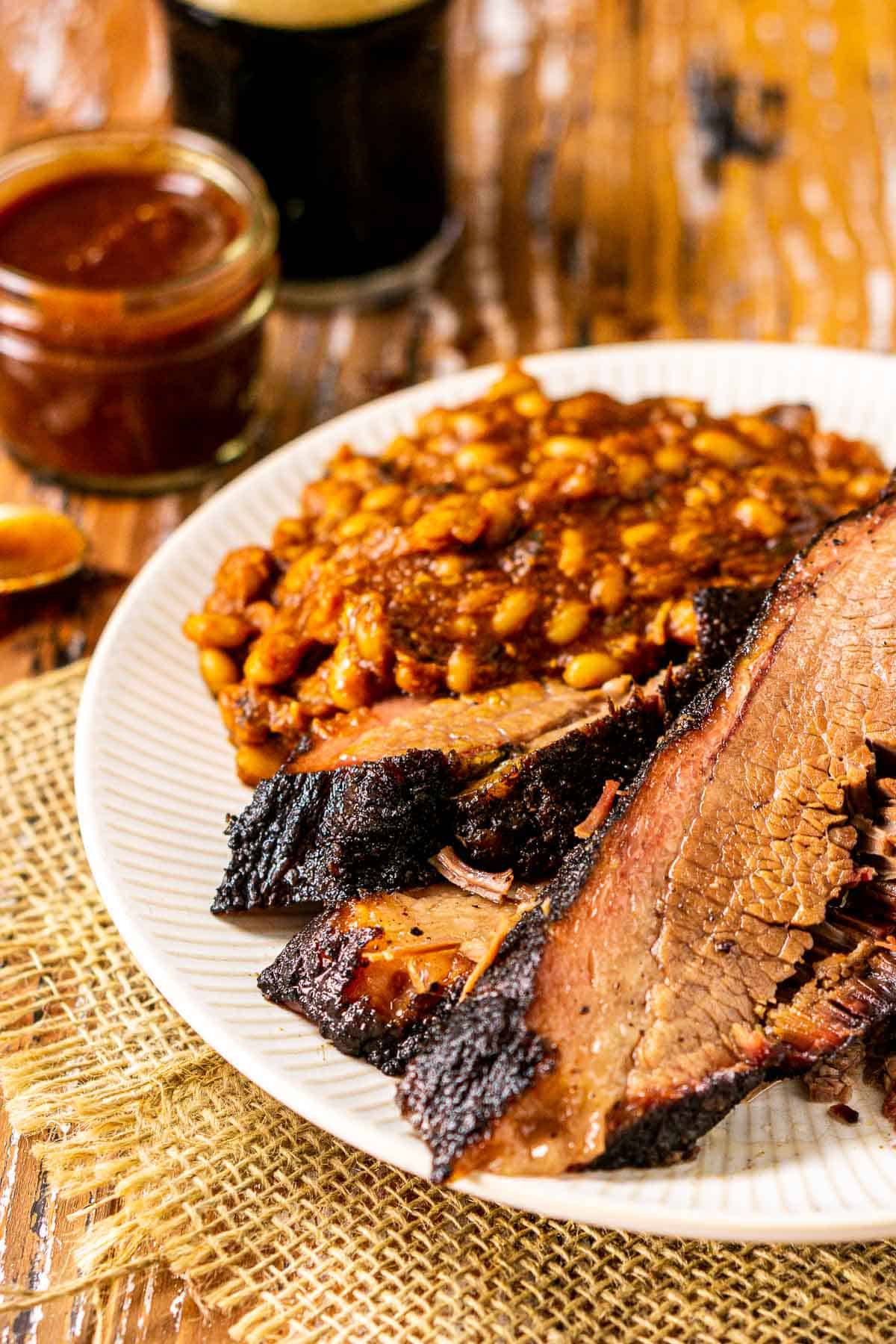
Jump to:
Why You’ll Love This Recipe
Makes you look like a pit master: One taste of this smoked pellet grill brisket and everyone will be in awe of your smoking skills. It can be our secret that it wasn’t nearly as hard as people might think.
Works on any type of smoker: While this recipe specifies a pellet grill, it works on any type of smoker for your convenience. Whether you have a Traeger, Pit Boss, Green Egg or any other type of smoker, you can apply these directions to that unit.
Requires very little hands-on cooking: Once we trim our brisket, most of the work is done, so you’re free to kick back with a cold one and enjoy good company. How’s that for easy hosting duties?
Feeds a crowd: Depending on the size, a whole brisket can feed 10-20 people. Yes, it’s an expensive cut, but when you consider how much delicious, succulent meat you get, it’s a pretty good deal.
Ingredients
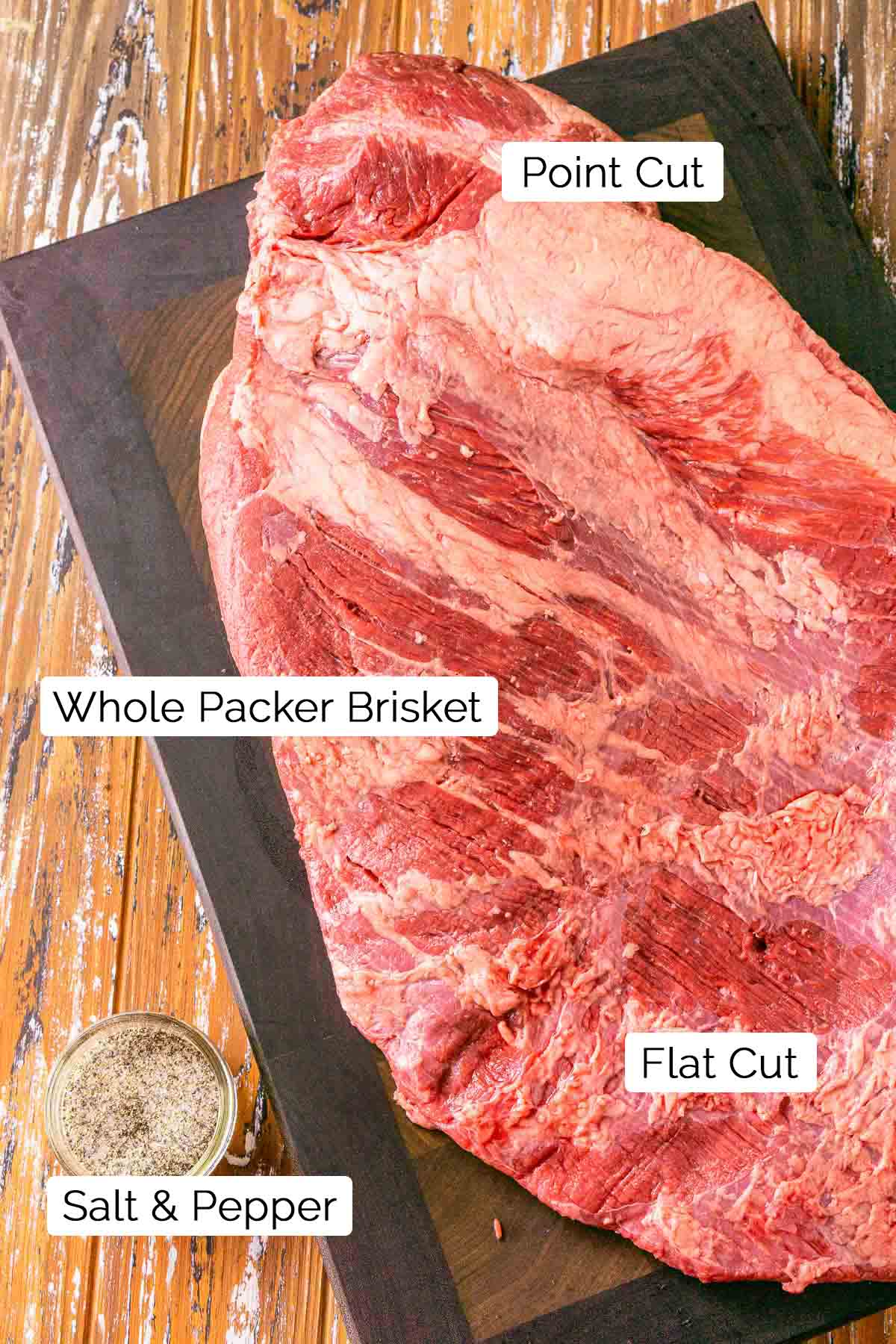
As you can see, a Texas smoked brisket recipe requires only three simple ingredients. Although I live in Denver now, I grew up in Houston and went to college in Waco, Texas, at Baylor University, so I’ve had my share of wonderful briskets. Trust me — you don’t need a fancy dry rub to make the best smoked brisket.
Whole packer brisket: This brisket includes the point cut and flat cut in one piece. The flat is the largest part of the brisket with a leaner texture while the point is the fattier piece that’s great for making shredded brisket. You can buy the flat and point separately, but that’s not what we want here — get the full packer brisket. This cut typically runs from 10-16 pounds, but it could be as large as 20 pounds.
If you can swing it, I recommend getting prime briskets from a local butcher shop rather than a chain grocery store. Quality does make a difference.
Salt and black pepper: Yep, that’s it. Smoked Texas brisket is all about letting the meat shine. We don’t want to distract from that tasty cut of beef. Of course, you can use your own BBQ rub if you insist, but it’s unnecessary for an authentic Texas brisket. You don't need garlic powder, chili powder, brown sugar and all those other spices to make a flavorful brisket.
Step-by-Step Instructions
How to Trim Brisket
Step 1: Let’s walk through how to trim brisket. This may seem intimidating, but once you start trimming, you’ll see it’s not as hard as you might think.
On one side, you’ll notice a fat cap covering. We want to trim the extra fat so that it’s about ¼-inch thick, and then trim any gray edges (photo 1).
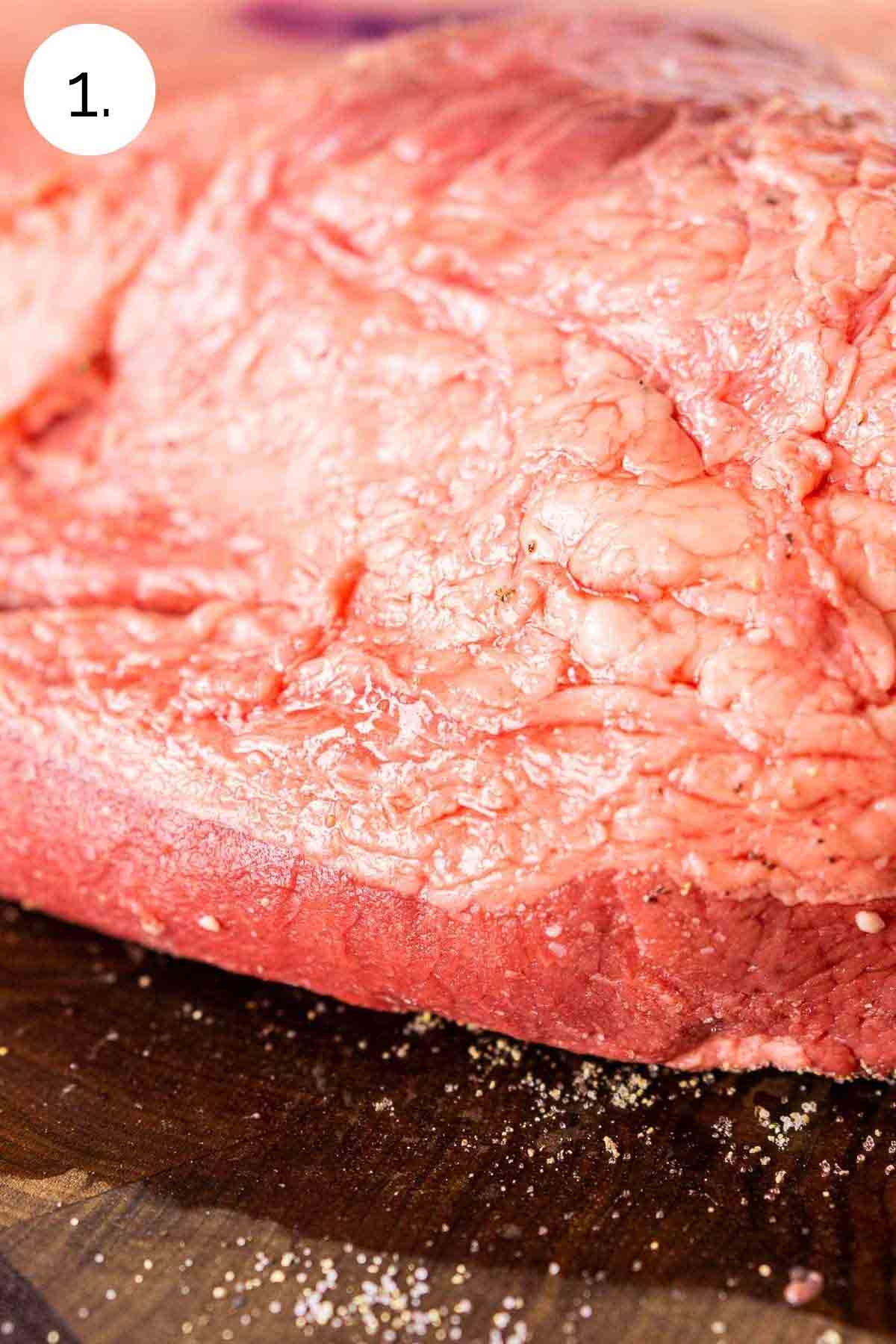
Now we flip the meat over and use a sharp knife to remove excess silver skin, and you can remove large areas of fat if you would like. It should look similar to this after trimming (photo 2).
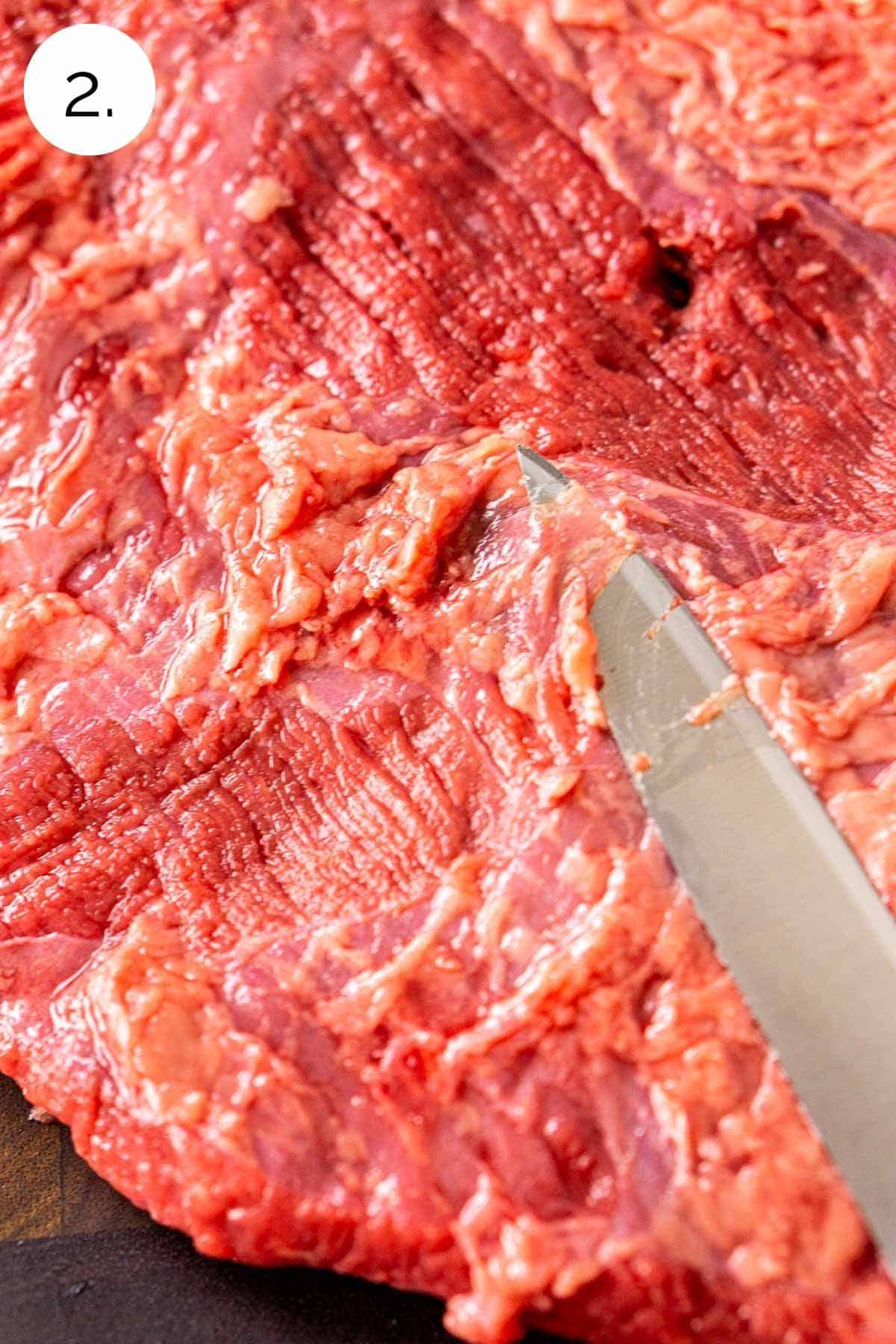
Don’t feel like you need to be perfect here with the extra fat. Just remove what you can. There will be some remaining, and that's just fine. Some people don't ever bother trimming the extra fat on this side.
From here, we cut out this large fatty piece, leaving the meat underneath intact (photos 3 and 4). This is a hard lump of fat that does not break down even with low and slow cooking, and you will not want to bite into this piece. We’ve now trimmed our brisket.
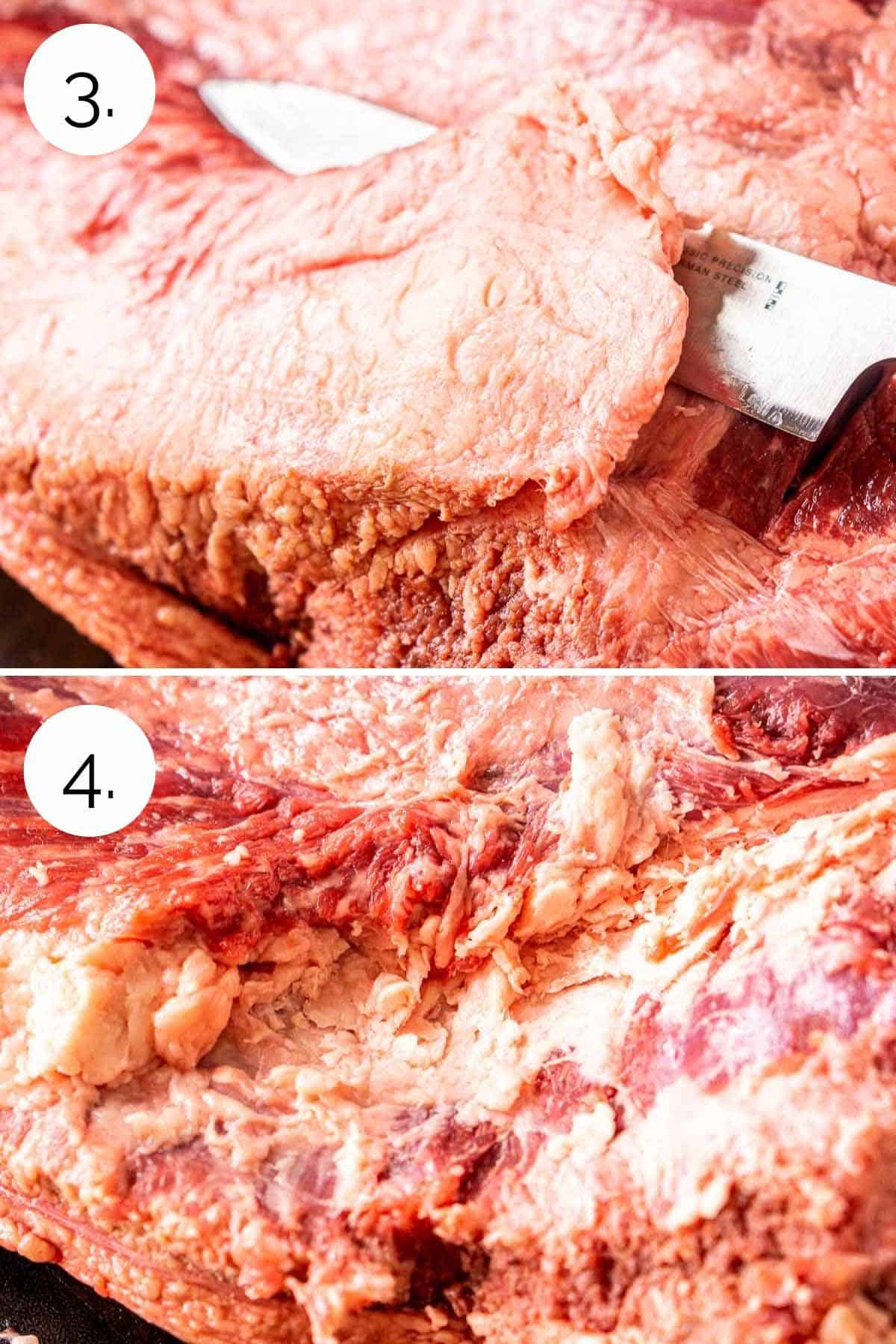
If you'd like to see a full video tutorial, Aaron Franklin of Austin's famous Franklin Barbecue shows how he trims his brisket.
Step 2: We mix together the salt and pepper and sprinkle it all over the surface of the meat, including both sides and the edges (photo 5).
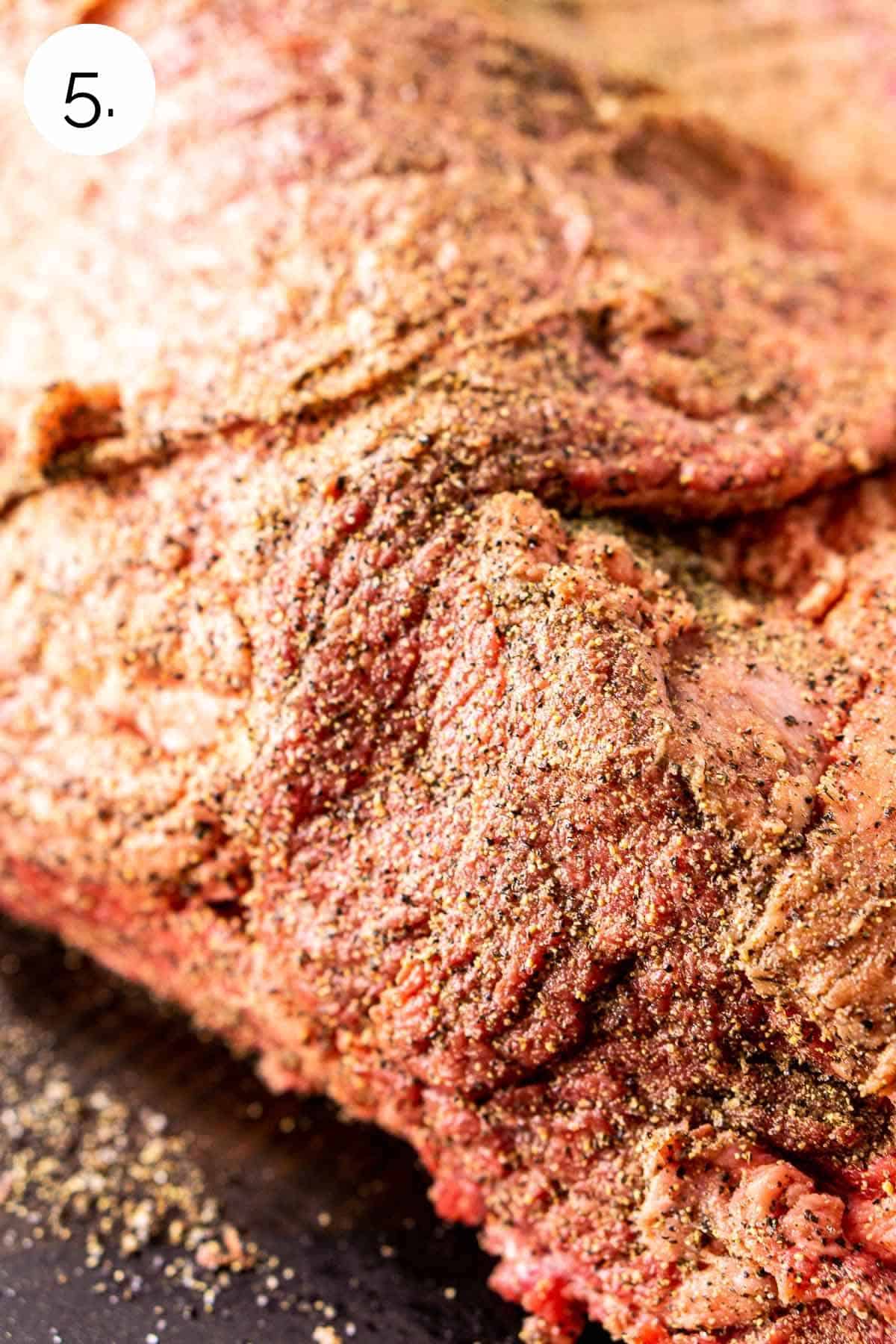
We place the rubbed brisket fat-side up directly on the grill grate in a 225-degree pellet smoker or the smoker of your choice with a water pan. The cooking process should be low and slow for the most delicious brisket. To ensure best results, we insert a leave-in probe thermometer in the thickest part of the flat cut.
Pro tip: While we can smoke the brisket right away, it's even better if you can wrap the brisket in plastic wrap after seasoning and refrigerate the meat for 24 hours to dry brine. During the dry brining process, the salt brings the meat's moisture to the surface, which dissolves the salt, and then the meat reabsorbs the salt. This results in a more flavorful, juicy brisket.
The Stall and Texas Crutch
Step 3: Once the internal temperature reaches about 160 degrees, it will hit a cooking stall where it will maintain the same temperature for hours. This happens as the connective tissue begins to break down, so to help our brisket get out of the stall and remain moist, we wrap it like a present in peach butcher paper, known as the Texas crutch (photo 6).
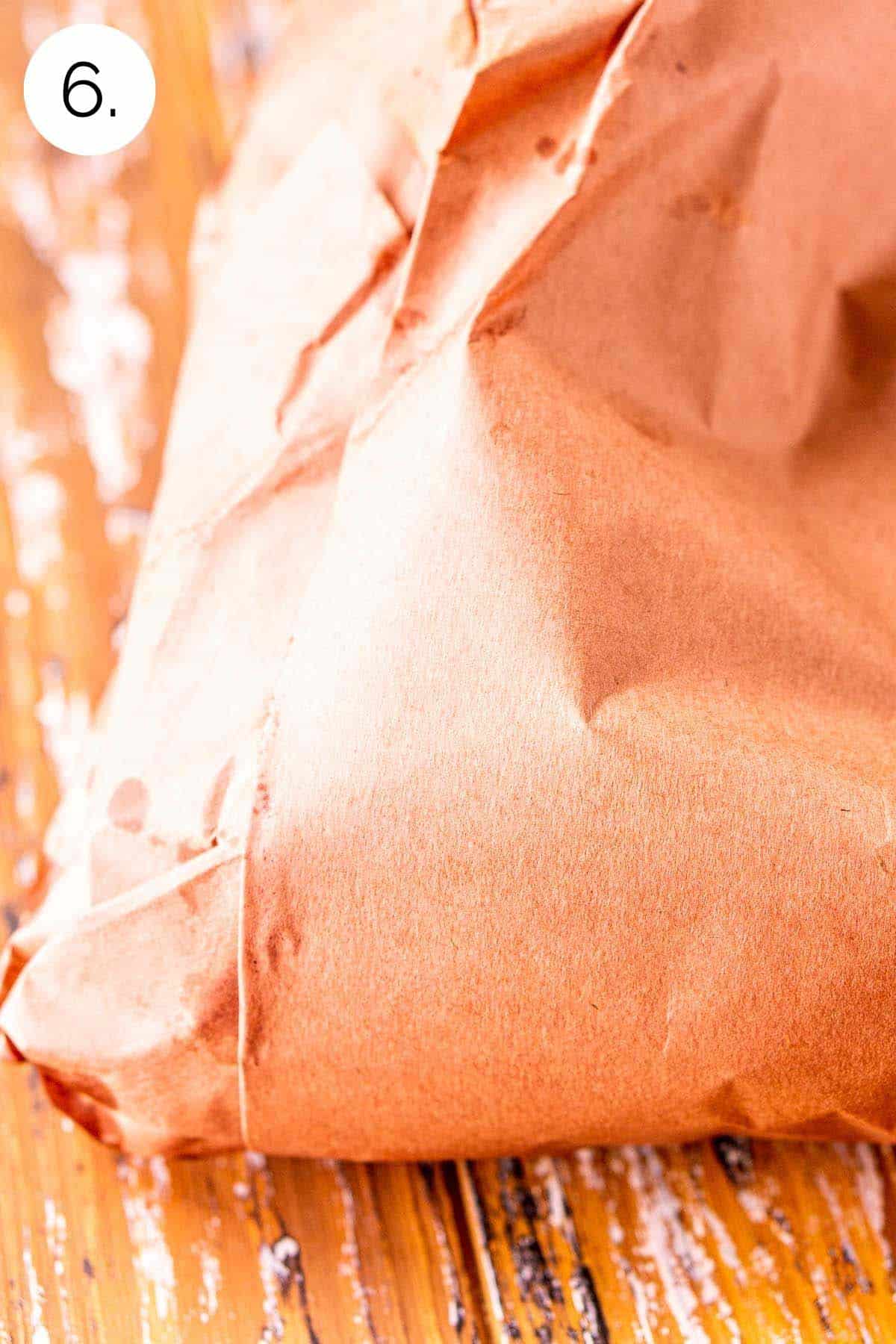
Pro tip: Keep in mind, the exact stall temperature can vary. If you notice the internal temperature number stalling or going up and down when it’s in the 155-degree range, go ahead and wrap it.
We put the wrapped brisket back on the smoker, insert the leave-in thermometer again and continue to cook until the internal temperature of the meat reaches 200-205 degrees with 203 degrees being the sweet spot. While the temperature probe should be accurate, I like to double check by inserting the meat thermometer in another spot or two. When the brisket is ready, you should be able to easily insert the thermometer like a hot knife to butter.
The Rest
Step 4: Now we remove the brisket from the smoker and let it rest for at least an hour, but it's much better if you can let it rest for two hours or more. In fact, the best brisket I ever made rested for six hours.
For that extra long rest, I boiled water in a tea kettle and poured it into a stainless steel bowl in a cooler and closed the lid to create a warm environment. When the brisket was ready, I double wrapped it with two towels, removed the bowl and placed the brisket in the cooler. It was still nice and warm after six hours and so incredibly tender that we called it meat butter instead of brisket.
After that nice long rest, we’re ready to carve, slicing across the grain on a cutting board (photo 7). Each cut of meat will have their grains running a different direction, so you'll have to rotate the meat as you slice.
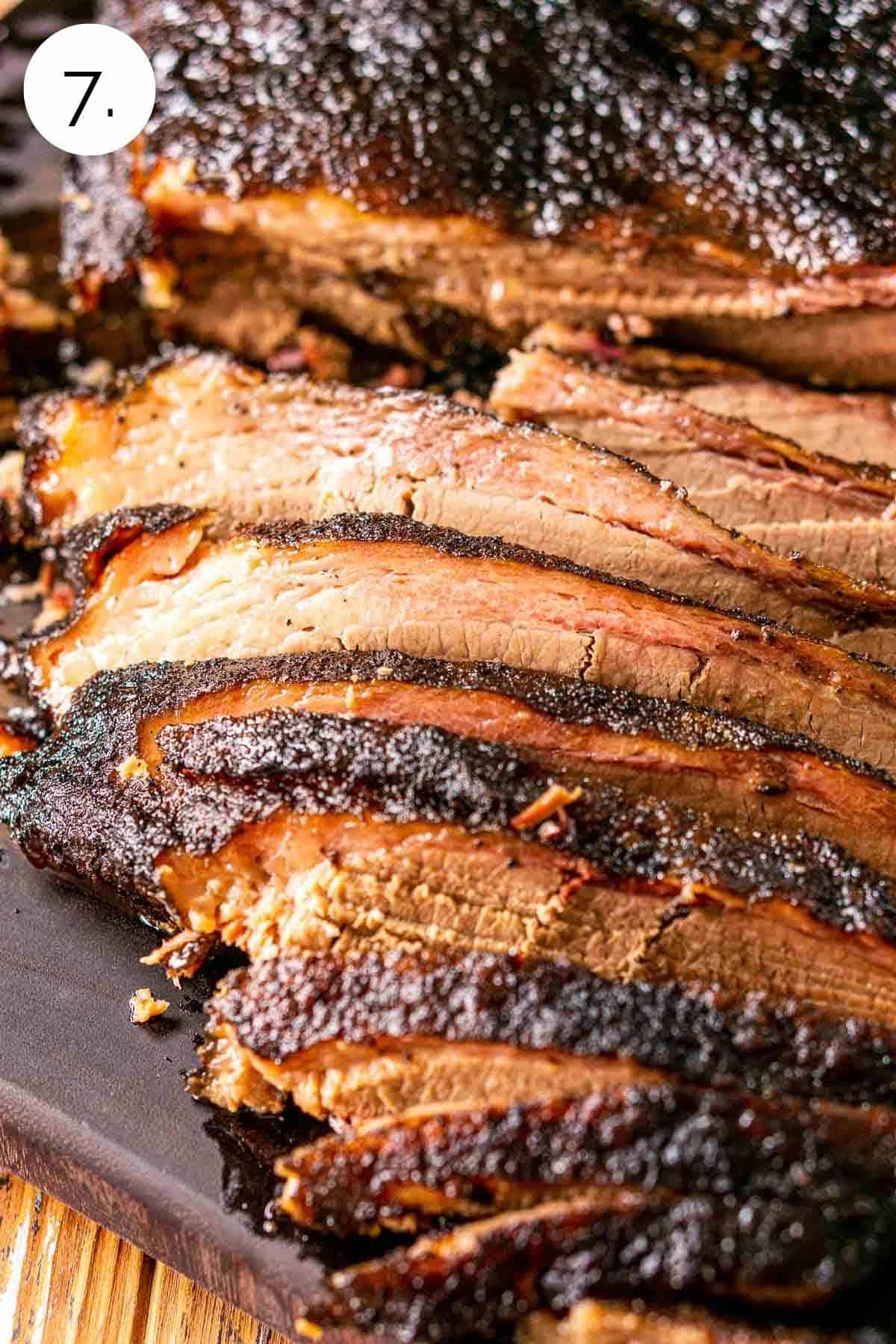
Just look at all that bark and the pink smoke ring. It’s pellet grill brisket perfection!
Bonus: If you’d like more recipes for your smoker, you should try my smoked tri tip, smoked burgers and smoked whole chicken. And don't miss my round-up of best pellet grill recipes.
How to Serve
For Texas purists, they don’t need any accompaniments and just want the smoked beef brisket in all its glory. That said, sandwich bread, onion slices and pickle chips are often served on the side. Sauce usually isn’t served with Texas brisket, but if you like sauce with brisket, you do you. My coffee-bourbon BBQ sauce and honey-sriracha BBQ sauce are always favorites.
And what’s a good cookout without side dishes? Try some of these:
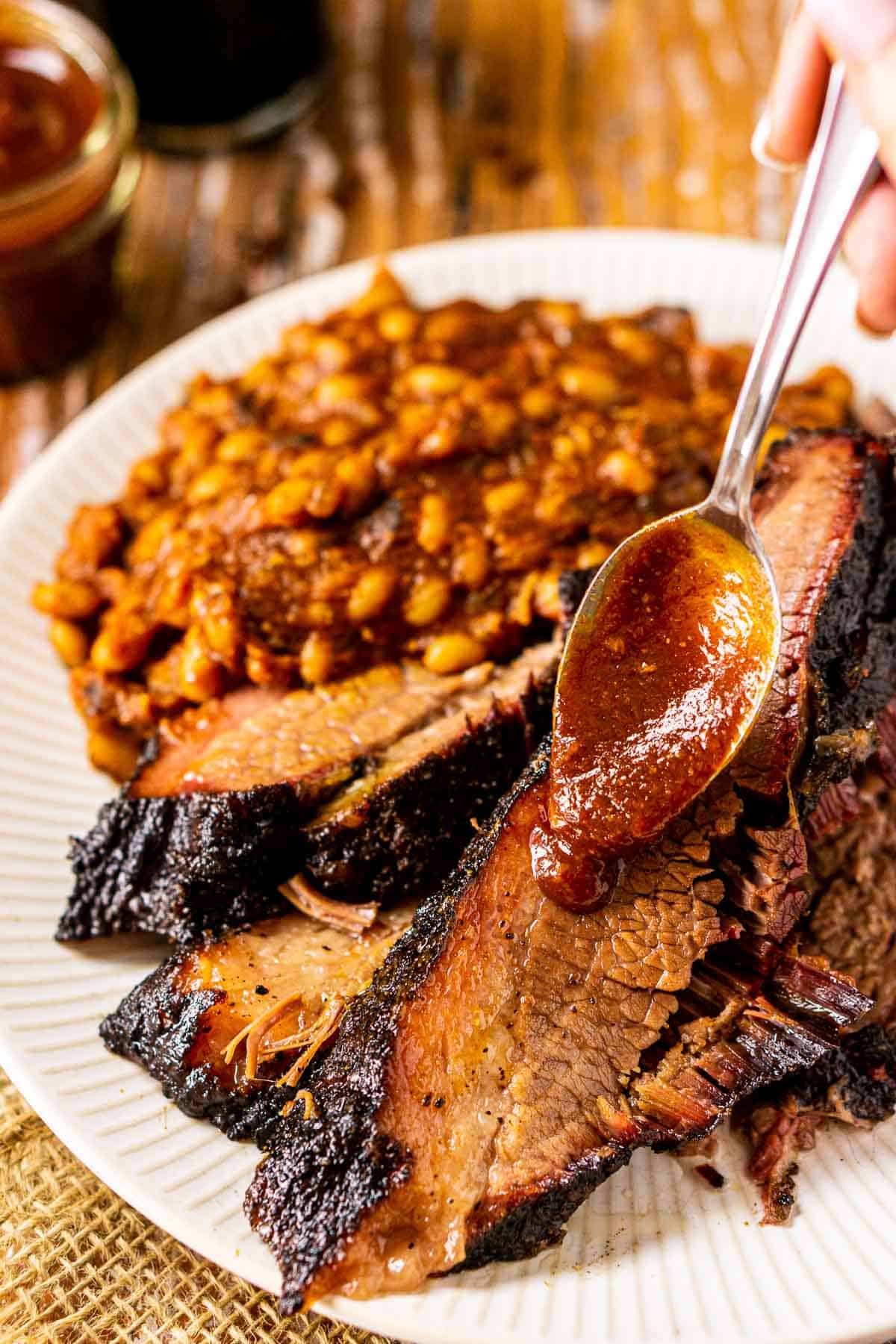
Recipe FAQs
Cooking brisket is not an exact science, but plan for 90 minutes per pound at 225 degrees. Not every brisket will cook the same, but 90 minutes is the standard guideline.
For an evening dinner, I start smoking the brisket the night before serving and check on it throughout the night. Yes, it’s a commitment, but I’ll do anything for my delicious meat baby. Hey, it's a labor of love.
For a real Texas brisket, go with oak or mesquite. Personally, mesquite is what I use. Brisket is a big meat, so we need a boldly flavored wood pellets. Save the fruit woods for lighter fare.
For the perfect brisket, the general rule of thumb is to place the fat side of the brisket up. During the smoking process, that layer of fat will melt and render all over the meat, making for an ultra flavorful, juicy brisket. If you place the fat side down, you'll lose all that wonderful fat rendering.
Let the meat rest for one hour at minimum, but I like to give it at least two hours or more if possible.
To hold the meat for two hours or longer, place a bowl of hot water in a cooler to create a warm environment toward the end of the smoking process. When the brisket finishes, wrap it in two towels and place it in the cooler without ice. This should hold the temperature for about six hours, which is great if you need to prepare the brisket ahead of time.
And please do not ever skip this important step. A cut this large needs time for the juices to settle. If you cut into the brisket, it will be dry, and you will have wasted all that time and money. Keep in mind, the rest time is separate from the cooking time.
Yes, simply place the brisket on a large baking sheet and continue cooking in the oven at 225 degrees. Sometimes you may come across bad weather and need to finish cooking inside.
I actually had to do this recently because of an equipment issue, and the brisket was still a huge hit with succulent, tender meat. Fortunately, it was after wrapping the brisket in butcher paper, so a lot of that smoke flavor already infused the meat.
Expert Tips
For easier trimming: Trim the excess fat on the brisket when it’s cold. The fat slices through much easier when it’s still firm.
Don’t overtrim the fat cap: While we don’t need all that fat, we do want some of it to keep the brisket flavorful and moist. Keep about ¼ inch of fat.
Let the butcher do the work for you: Don’t want to bother with trimming? Ask the butcher to trim. I’ve also bought a pre-trimmed brisket, and that hard fat chunk was still in tact, so you might want to specify you’d like it removed.
Allow the brisket to sit at room temperature before smoking: While this step is technically optional, it helps with more even cooking if we can take the chill off the meat.
Get the right type of butcher paper: Make sure you use a food-grade butcher paper. You can also use aluminum foil, though I prefer butcher paper because it’s porous. This allows it to breathe and retain moisture but not so much moisture that it overly softens the bark. I get my butcher paper on Amazon.
Keep an eye on your pellet hopper: We're smoking for a long time, so you want to make sure you don't run out of wood pellets. Refill as needed.
Perfect Pairing
Pair this smoked pellet grill brisket with a bold stout, and you are in for a delicious match. The smoky brisket is perfect with the stout’s roasted malt, and stouts show off a robust mouthfeel that can stand up to such a big, rich meat.
If wine is more your style, a syrah is a nice pairing for brisket. Syrah has some big berry notes for some contrast but also shows off some spice and even a smokiness that beautifully matches our cooking style.
Or maybe you love a cocktail. I’m always a big fan of bourbon with beef. My sweet tea mint julep is wonderfully refreshing on a hot summer day.
For the ultimate backyard party, serve this pellet grill brisket, and everyone will feel full and happy. It’s the perfect summer dinner for a crowd.
Cheers!
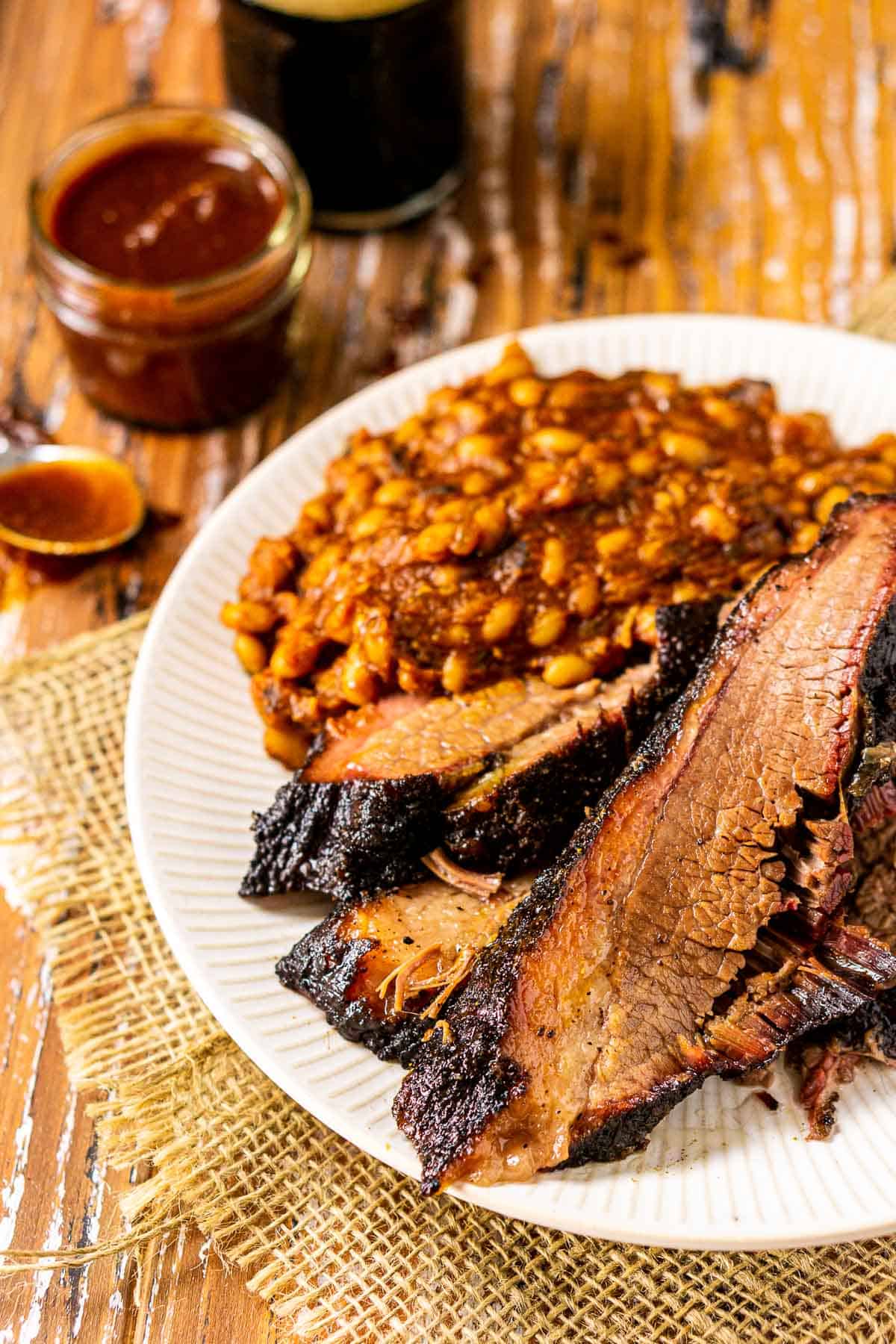
More Summer Dinner Recipes
If you love this recipe, please leave a comment with a five-star rating — or simply hit the five-star button in the recipe card. Don't forget to sign up for my newsletter, and you can follow me on Facebook, Instagram, Pinterest and TikTok.
📖 Recipe
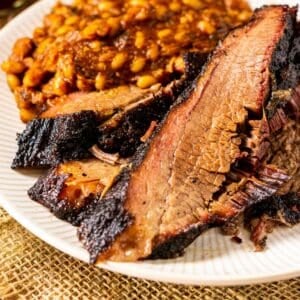
Smoked Pellet Grill Brisket (Texas Style)
Equipment
- Large cutting board
- Sharp knives
- Peach butcher paper
- Pellet grill smoker (you can also use any other type of smoker)
- Wood pellets preferably mesquite or oak for Texas style
- Leave-in meat thermometer
Ingredients
- 1 (12-16) pound whole packer brisket
- ¼ cup salt
- ¼ cup black pepper
Instructions
- Remove the brisket from the refrigerator and immediately start trimming. To trim, cut the fat cap so that it's ¼-inch thick and trim any gray edges. Flip the brisket over and trim any excessive fat patches and silver skin. Locate the hard fat mass near the point cut and remove it, leaving the meat underneath the fat intact. (Please refer to photos in the blog post if needed.)
- Stir together the salt and pepper. Sprinkle all over the surface of the meat and fat cap, including the sides. If possible, do this 24 hours before smoking, wrap the seasoned brisket in plastic wrap and refrigerate it to dry brine for even more flavorful, juicy meat. Before smoking, let the brisket sit at room temperature for an hour.
- Prepare the smoker and set it to 225 degrees. Add a water pan in the smoker (and keep it filled while cooking) and place the brisket fat-side up directly on the grates with the point cut closest to the heat source. Insert a leave-in thermometer in the thickest part of the flat cut.
- Close the smoker and smoked until the smoker reaches about 160-165 degrees, about four to six hours. This is about when the temperature will stall for several hours. Remove the brisket and wrap it like a present so that it's nice and sealed in peach butcher paper to help the brisket get out of the stall and remain moist.
- Place the brisket back on the smoker with the leave-in thermometer and cook until it reaches an internal temperature of 200-205 degrees with 203 degrees being the sweet spot.
- Remove the brisket from the smoker and keep it in the butcher paper. Let the brisket rest at room temperature for at least an hour, but it's much better if you can rest it for two hours or more in a cooler. Do not skip this step. Skipping this step will result in a dry brisket. For resting in a cooler, boil water in a tea kettle, pour it into a large bowl and place the bowl in a cooler with the lid closed to create a warm environment when the brisket is about 195 degrees F. Double wrap the brisket in two towels, remove the bowl of hot water and place the brisket in the cooler for up to six hours.
- Slice the brisket across the grain, keeping in mind that the different cuts will have grains running in different directions. If desired, serve with smoked baked beans. Enjoy!
Notes
- The best brisket I've ever made was dry brined and rested for six hours in a warm cooler, so I recommend planning ahead for those steps if possible.
- Don’t want to bother with trimming? Ask the butcher to trim. I’ve also bought a pre-trimmed brisket, and that hard fat chunk was still in tact, so you might want to specify you’d like it removed.
- The exact stall temperature can vary. If you notice the internal temperature number stalling or going up and down when it’s in the 155-degree range, go ahead and wrap it.
- Make sure you use a food-grade butcher paper. You can also use aluminum foil, though I prefer butcher paper because it’s porous. This allows it to breathe and retain moisture but not so much moisture that it overly softens the bark. I get my butcher paper on Amazon.
- We're smoking for a long time, so you want to make sure you don't run out of wood pellets. Refill as needed.
- Save any leftovers for this delicious brisket mac and cheese or brisket sliders.
- Nutritional information is only an estimate. The accuracy of the nutritional information for any recipe on this site is not guaranteed.
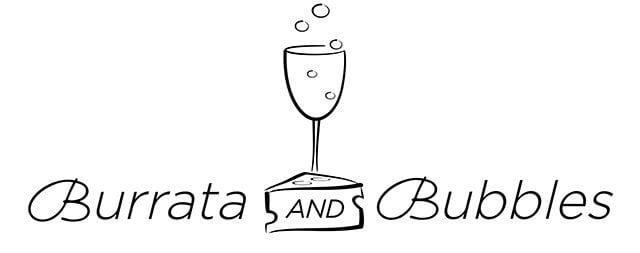

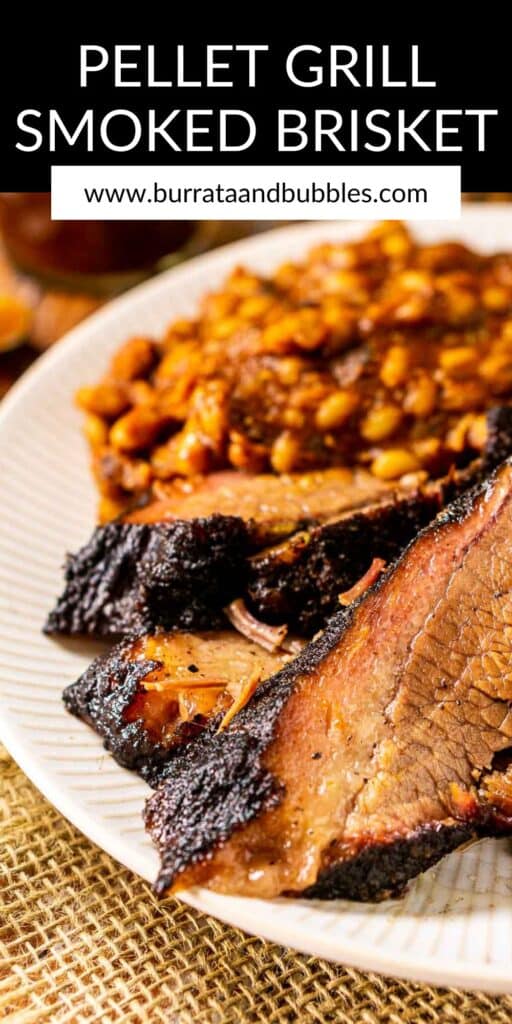
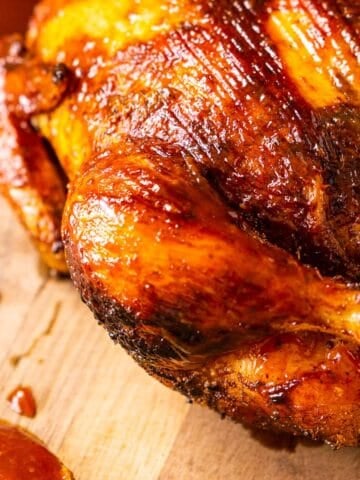
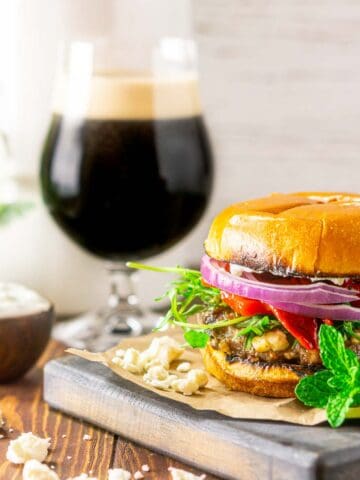
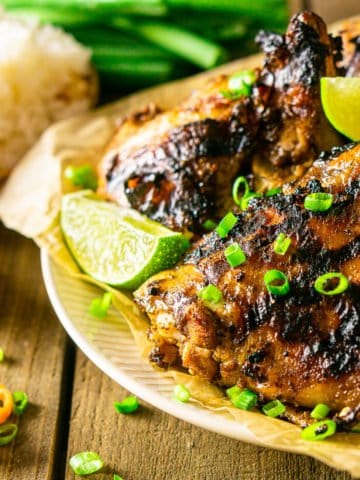
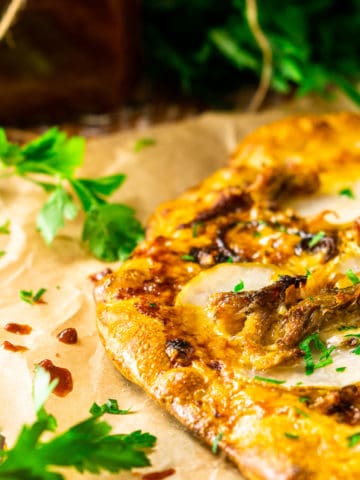
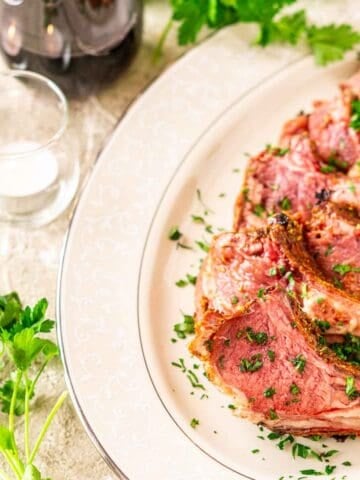
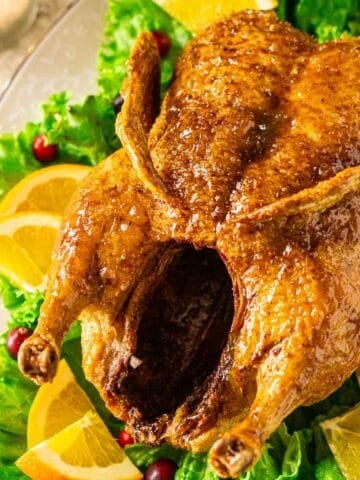
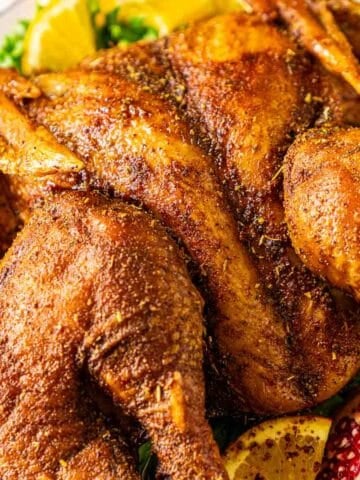
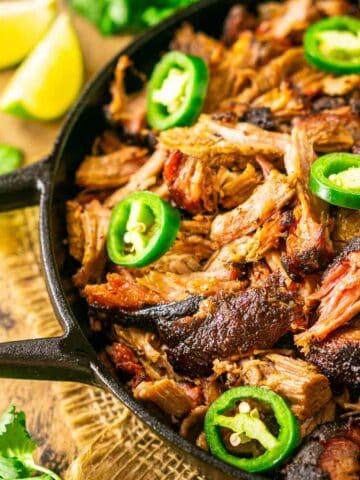
Ed Wolfe says
It sure worked for me. My 1st Brisket. Done for extended family and what a hit.. It turned out just like the commercials show. I did use aluminum foil but, was still fantastic. Thank you for sharing the recipe.. Ed W
Amanda McGrory-Dixon says
I'm so, so happy to hear this, Ed! Thank you for sharing, and I'm so glad everyone loved it. Hope you had a wonderful Labor Day weekend!
juds says
can you use parchment paper instead of butcher paper? I have large sheets of it that it would fit in.
Amanda McGrory-Dixon says
If you don't have butcher paper, I'd actually go ahead and use heavy-duty foil instead of parchment paper. Parchment paper is considerably lighter and more delicate than butcher paper, so I don't think it would work very well. It's also very susceptible to burning, so you may run into serious safety issues with parchment paper. You can get butch paper on Amazon, though! The deliver is pretty quick for me.
Amy Casey says
Thanks for including the tips on how to trim a brisket ~ so helpful! We ate it up quickly.
Amanda McGrory-Dixon says
Thank you!
Jenny says
Outstanding! Where’s the beef? Right here! I picked up a packer brisket for a summer get-together. We all couldn’t get enough.
Amanda McGrory-Dixon says
Glad it was a hit!
Veronika says
We recently got a pellet smoker so I was excited to give this a try! You explained the process so well that smoking the brisket was a breeze. My boyfriend loved it!
Amanda McGrory-Dixon says
Thank you for sharing! So happy it was a success.
Sharon says
What a great tutorial and rundown for making the best and most tender brisket on the smoker.
Amanda McGrory-Dixon says
Thank you, Sharon! Happy it's helpful.
Jere Cassidy says
We love brisket and glad to have your techniques for making this on the smoker. The taste is incredible and it's so easy to do.
Amanda McGrory-Dixon says
So glad it was delicious and easy!
Leslie says
My husband just got a new smoker and had never done brisket before. This was super helpful! Loved how it turned out.
Amanda McGrory-Dixon says
I hope you enjoy many more brisket nights!
Jessica says
I took your advice and kicked back with a cold while the smoker did its thing. Aside from the brisket itself, it doesn't get much better than that! This was actually my first time smoking a brisket and thanks to you it turned out perfectly, so tender and flavorful.
Amanda McGrory-Dixon says
That truly sounds like the quintessential summer day!
Sean says
I mean, you cannot have barbeque without brisket and this was phenomenal.
Amanda McGrory-Dixon says
I'm so glad you agree!
Pete says
Simple and delicious! I used my Chargriller Smoker with Pecan wood, and it was moist and flavorful.
Amanda McGrory-Dixon says
Makes me happy to hear that -- thank you!
Heather says
I love brisket but had never attempted to cook my own. Thank you for all the tips and how to trim! It was great.
Amanda McGrory-Dixon says
I'm so happy it helped!
Ann says
This just had my mouth watering! It was perfect. My husband especially loved this!
Amanda McGrory-Dixon says
Yay for delicious brisket!
Nancy says
My boyfriend made your brisket this weekend, he lived in Texas and said your recipe was on point!
Amanda McGrory-Dixon says
Love hearing that! Thank you!
Danielle says
This turned out so juicy and tender! I served it with some of my own homemade BBQ sauce and it was such a hit with my family. Thank you!
Amanda McGrory-Dixon says
You're very welcome! It's truly the perfect summer meal.